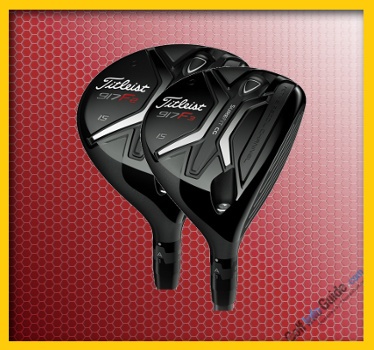
© TITLEIST Golf
The Titleist Fairway Woods 917 F2 and 917 F3 retail for $350 (MSRP) and they’re built and designed for all around playability, with more distance and forgiveness on top via their larger profile. The main difference between the Titleist Fairway Woods 917 F2 and 917 F3 is that the latter has a higher launch and slightly more spin. Other than that, they’re quasi-identical. What’s revolutionary about these fairway woods from Titleist is the brand new adjustable weight system, which is aimed at helping golfers to mitigate their big miss. Both Titleist Fairway Woods 917 F2 and 917 F3 are a little longer than the previous 915 generation and they offer a nice melange of traditional looks and feel, that will make you fall in love on first sight. Err, hit. Who are they for, you may ask? Well, every player who loves fairway woods should give these babies a chance, as they will provide you with absolutely everything a golfer wants from a fairway wood and then some. The Titleist Fairway Woods 917 F2 and 917 F3 look and feel great and they also offer solid performance. However, they’re not the easiest nor the longest to hit.
The new 917 Fairway wood family is built around the concept of adjustability. The weights in the Titleist Fairway Woods 917 F2 and 917 F3 play a similar role compared to the 917 drivers, i.e. they’re impactful though not quite cutting edge, as other companies were doing that for a decade now. Design wise, these fairway woods have the classic pearshape and the familiar triangular alignment aid. In terms of sound and feel, both Titleist Fairway Woods 917 F2 and 917 F3 are incredibly solid, offering great feedback on mishits. Keep in mind that these clubs are aimed at pleasing traditionalists, hence if you’re seeking for a boomy sound, these are not the droids you’re looking for. It’s also important to know that the Titleist Fairway Woods 917 F2 and 917 F3 are not the optimal choice for everyone, as they’re best played effectively by players with handicaps in the mid teens or better. Bottom line, the Titleist Fairway Woods 917 F2 and 917 F3 are solid performers which arrive in a fantastic package, being aimed at traditionalists who prefer that classic Titleist look and feel. The F2 is the most forgiving of the bunch and it launches high, whilst the F3 is more, how should I put it…workable.
The Titleist 917 F/F3 Fairway Woods retail for $350 (MSRP) and they make for an upgrade to the previous 915 generation, especially in terms of distance, sound and feel. The Titleist 917 F2 combines forgiveness and distance with all around playability in a larger profile fairway and offers higher launch and slightly more spin compared to the F3. The Titleist 917 F3 fairway wood offers lower launch and slightly less spin vs the F2, while promoting distance and combining shot control and versatility in a compact profile. Just like the 917 series driver, the Titleist 917 F2/F3 Fairway Woods feature the company’s proprietary Sure Fit CG adjustable sole weight, that can modify the amount/placement of weight in the head, which obviously changes its behavior , i.e. heavier at one end, it allows you to promote either a fade or draw. The newly designed ARC 2.0 Active Recoil Channel is also there, and it’s now cut through the sole to offer improved rebound. The new ARC 2.0 channel in the 917 fairway woods is now filled with a synthetic material, an elastomer of sorts, unlike the 915 gen where the area was hollow, thus helping producing lower spin and more ball speed. There’s also a face insert added into the mix, with variable thickness, to boost speed on off center hits.
Both Titleist 917 F2/F3 Fairway Woods are forgiving, feeling and sounding great, having a more muted sound and a softer feel vs the 915 generation, and on top of that, they’re adjustable for fine tuning trajectory, while boasting a classic look at address, a feature that will appeal to a wide range of golfers.





